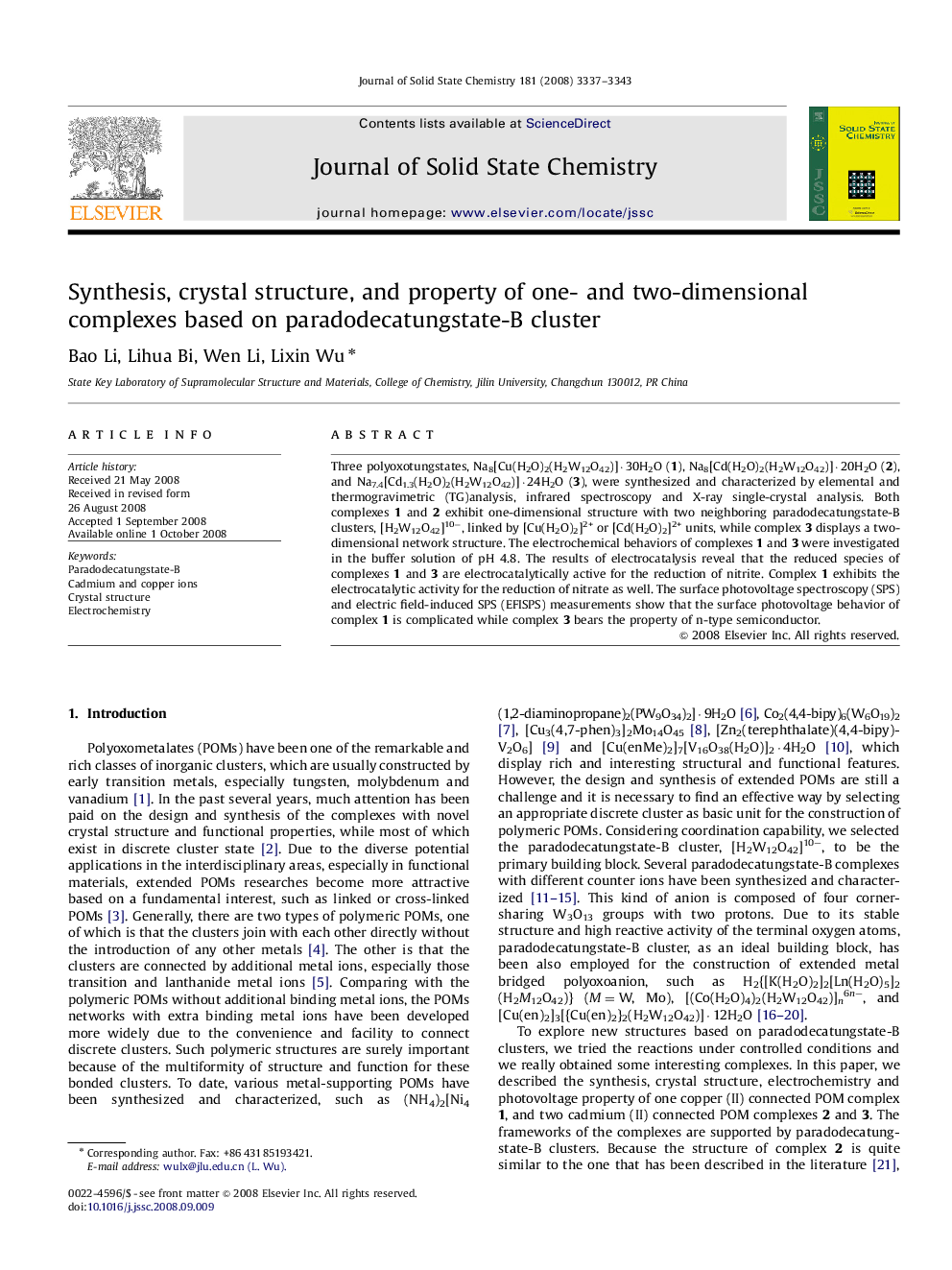| Article ID | Journal | Published Year | Pages | File Type |
|---|---|---|---|---|
| 1331922 | Journal of Solid State Chemistry | 2008 | 7 Pages |
Three polyoxotungstates, Na8[Cu(H2O)2(H2W12O42)]·30H2O (1), Na8[Cd(H2O)2(H2W12O42)]·20H2O (2), and Na7.4[Cd1.3(H2O)2(H2W12O42)]·24H2O (3), were synthesized and characterized by elemental and thermogravimetric (TG)analysis, infrared spectroscopy and X-ray single-crystal analysis. Both complexes 1 and 2 exhibit one-dimensional structure with two neighboring paradodecatungstate-B clusters, [H2W12O42]10−, linked by [Cu(H2O)2]2+ or [Cd(H2O)2]2+ units, while complex 3 displays a two-dimensional network structure. The electrochemical behaviors of complexes 1 and 3 were investigated in the buffer solution of pH 4.8. The results of electrocatalysis reveal that the reduced species of complexes 1 and 3 are electrocatalytically active for the reduction of nitrite. Complex 1 exhibits the electrocatalytic activity for the reduction of nitrate as well. The surface photovoltage spectroscopy (SPS) and electric field-induced SPS (EFISPS) measurements show that the surface photovoltage behavior of complex 1 is complicated while complex 3 bears the property of n-type semiconductor.
Graphical abstractThree transition metals supporting complexes based on paradodecatungstate-B anions were obtained in aqueous solution. The single-crystal structure analysis reveals that two of them are one-dimensional while the other one is a two-dimensional complex.Figure optionsDownload full-size imageDownload as PowerPoint slide
